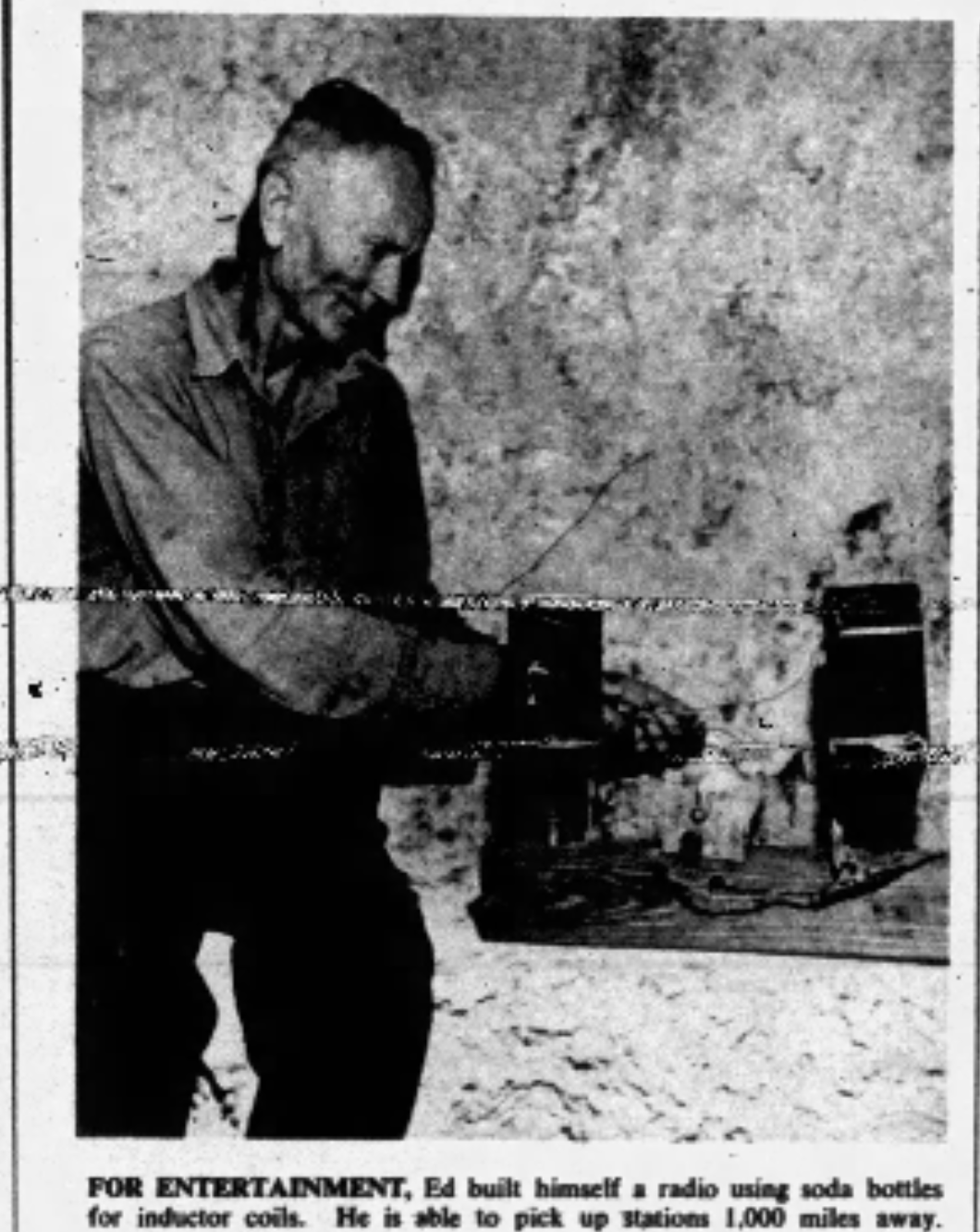Howdy, Stranger!
It looks like you're new here. If you want to get involved, click one of these buttons!
Eds Radio

Currently it's the only photo of Ed and his radio
I wish the photo had better detail
Powered by leedskalnin.com & buzzdev.net
It looks like you're new here. If you want to get involved, click one of these buttons!

Comments
You know that the refractive index of light through plastic or glass is 1.5 which is 42degree and slows down by 1/3
Snells law: n₁sin𝓲 = n₂sinr ⟹ sin𝓲 = 1/1.5 = 0.66′ ⟹ 𝓲 ≈ 41.81
“One and one-half “ -ed
i have to point out there are headphones left in eds belongings. where are eds headphones in this photo demonstration?
in magnetic current ed says to put the coil and core in an iron tube, is most efficient. it doesnt waste any magnets that come from the battery or dynamo.
ed says all currents are alternating.
instead of using crystal radio to move a diaphragm in headset to make sound. the crystal radio maybe have been used to store energy in all that mass or iron tied around everything. the coils magnetic field, instead of moving a coil. if the coil is stationary where it cannot move, then the magnet will move instead. ed also uses soft iron wire, and mentions smaller soft iron wire with more turns, make stronger magnets, he said he can do the same with copper wire coil but smaller scale.
ed does not talk about glass bottles, but he does talk about glass twice in magnetic current.
we know Ed used a crystal radio. Ed wouldn't have bought a newfangled germanium diode which was a new idea, rare, and expensive in the 1940's. Ed would have used a crystal detector with a cat's whisker wire. there isn't one in the pic nor are their headphones. there's 2 coils and a tuning cap. i think this setup may have been something he was experimenting with.
in the old gift shop there was a crystal radio made up of a 1920's radio coil from a junked set, a tuning cap from a WW2 radio, a crystal detector with cat's whisker, and a set of 1920's headphones. it was all crudely attached to a dingy piece of plywood. those items got put away when gift shop got trashed by a hurricane.
in Ed's room, along the wooden beams, is a zigzag of heavy gauge copper wire that starts at corner shelf where his pantry hangs, goes up, zigzags on every beam, and would exit to roof. on roof, center turret block on east side has a hole cut into it on inside where a wire could be fastened. old timers claim to remember seeing wires strung from tower to moon and obelisk.
on the electronics display board that hung in Ed's shop (something done by Levin maybe) there were other older tuning caps. Ed clearly was messing with radios and even tells you in some interviews that got published.